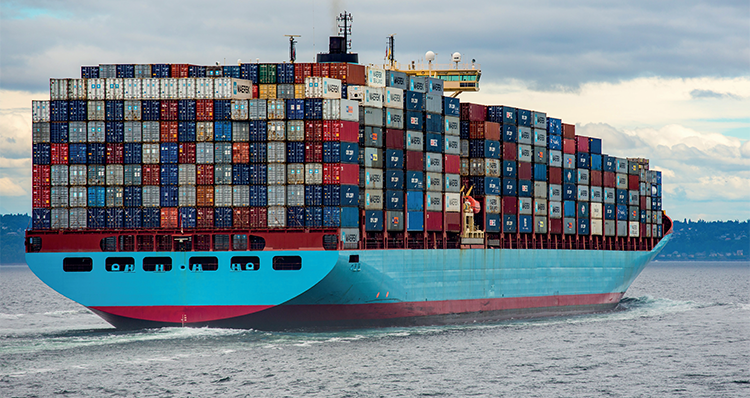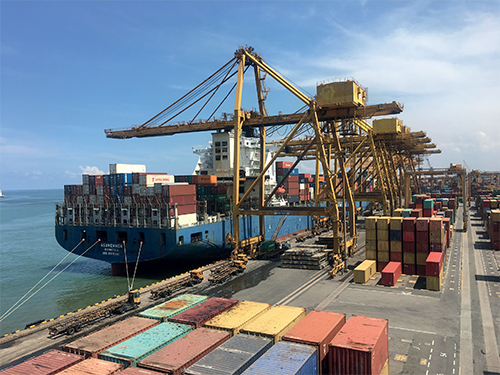
A step on the journey
A sober assessment of the outcome of the COP26 climate negotiations in Glasgow is the same as for many previous rounds of the talks and will likely be the same for many to come: some progress, yes, but not as much as the climate science tell us is needed.
The talks also reinforced a narrative that dates back to the conclusion of the critical Paris Agreement, in 2015, and beyond: that the private sector is steadily and increasingly mobilizing behind a profound economic transition – from a global economy that relies on fossil fuels to one that will, some point in the second half of this century, be essentially decarbonized.
That transition will be far-reaching and complex, and it will be primarily played out not in intergovernmental negotiations but along value and supply chains.
What was achieved in Glasgow
The Glasgow climate talks did, arguably, meet the host government’s objective of ‘Keeping 1.5oC alive’. This is the more ambitious of the two thresholds for an increase in average global temperatures agreed in Paris six years ago. In the run-up to Glasgow, and at the talks, governments increased the ambition set out in their national emission reduction plans, and new commitments were made to tackle methane emissions, deforestation and to phase-out coal (by some countries).
The Glasgow Climate Pact, one of the official outputs of the talks, committed countries to come back by the end of 2022 with more ambitious targets, come up with more finance to help developing countries respond to climate change, and set out long-awaited rules on trading emissions.
But the world remains substantially off track in terms of emissions reductions. If countries meet their long-term promises, global warming could be held to 1.8oC by the end of the century – still above 1.5oC. However, current policies in place would result in around 2.6-2.7oC of warming. This implies that a tightening of climate policies will be needed in the years to come.
The private sector responds
The official negotiations are only one part of the climate talks. In addition, COP26 saw an unprecedented number of new coalitions, voluntary commitments and corporate pledges. The private sector was particularly visible and, in many ways, is moving faster than the intergovernmental process. Ambitious companies are moving ahead and getting agreements done.
Some of these coalitions are sector based, such as the Glasgow Financial Alliance for Net Zero, which comprises financial institutions  managing $130 trillion in assets in a commitment to Paris alignment, and the commitment from car makers (alongside governments) to the transition to zero-emission vehicles.
managing $130 trillion in assets in a commitment to Paris alignment, and the commitment from car makers (alongside governments) to the transition to zero-emission vehicles.
But what was noteworthy was the number of alliances that are emerging across sectors, aiming to work along value chains to reduce emissions. Perhaps the most significant was the launch of the First Movers Coalition, which brings together global companies with supply chains across carbon-intensive sectors. The coalition, a public-private partnership between the US State Department, through Special Presidential Envoy for Climate John Kerry, and the World Economic Forum, aims to mobilize companies’ collective purchasing power to create demand for low-carbon products and services from emerging technologies. This is catalyzing sector transformation across borders.
A value-chain approach
It is self-evident that, to meet the growing number of corporate net-zero commitments, companies will have to work up and down their value chains. On average, the emissions from a company’s supply chains are 11.4 times greater than its direct emissions, according to research from CDP, a not-for-profit which runs the world’s largest database of corporate environmental disclosure. Credible corporate carbon targets – those judged to be in line with the recommendations of the Science Based Targets initiative – involve pledges to bring value chain emissions down to net zero.
This will be challenging, to say the least. There is an urgent need for better reporting and disclosure of emissions along supply chains. Buyers need to better communicate their net-zero objectives and delivery for expectant consumers and procurement.
But there is a more fundamental challenge: the risk that the zero-carbon inputs, whether commodities such as steel, aluminum or cement, or services such as transport and logistics, simply won’t be available at scale, quickly enough, to enable corporate climate targets, and by extension national emissions goals, to be met.
The recovery from Covid-19 has provided a vivid lesson in limits to global supply chains. In the face of an extraordinary recovery in demand, their weaknesses have been demonstrated. We are likely to see similar extraordinary demand in zero-carbon goods and services, especially if policy is tightened in response to an accelerating climate emergency.
Planning now for the 2030s
The challenge is to put in place the planning, development, investment and commercialization of zero-carbon technologies now to ensure that these supply chains are in place in the 2030s and 2040s, when we will need to deliver steep emission reductions. At the Mission Possible Partnership, we are working with seven carbon-intensive industrial sectors – aluminum, cement, chemicals, steel, aviation, shipping and trucking – to put in place the sector transition strategies necessary to deploy net-zero solutions at scale.
Key to our approach with these so-called hard-to-abate sectors is working along their value chains to ensure both supply of zero-carbon inputs and demand for zero-carbon outputs.
For example, the aviation transition strategy focuses on the need to ramp up the use of sustainable aviation fuels as well as new hydrogen and battery-electric propulsion aircraft. The steel transition plan, backed by iron ore suppliers, leading steel producers, and sector technology suppliers, sets out how value-chain collaboration can help overcome the initial ‘green premium’ faced by the first wave of climate-friendly steel producers.
And, in shipping, the sector’s transition perspective shows how demand from the sector from hydrogen can underpin the growth of that new industry, supporting the decarbonisation of other value chains.
The Mission Possible Partnership is building platforms for these seven sectors that allow their entire value chains to collaborate on the net-zero journey. But this collaboration will be impossible without the proactive engagement of government. They will need to step forward with regulatory frameworks to support the investment in net-zero technologies, and with the ambitious climate targets that will, ultimately, underpin the demand for the net-zero goods and services they produce. The result of the laser focus on the net zero end goal will also be supply chains that are better understood, managed and are more resilient to global risks. Owning the entire supply chain will be the only way to do business.
For a list of sources used in this feature – contact the editor
Anthony Hobley
Anthony Hobley is Co-Executive Director of Mission Possible Partnership & Executive Fellow at the World Economic Forum. The Mission Possible Partnership is a collective endeavor, founded and driven by the Energy Transitions Commission, RMI, WeMeanBusiness Coalition, and the World Economic Forum. It orchestrates the efforts of more than 15 organizations who work with corporate leaders to advance the decarbonization of heavy-emitting industries. These industries are collectively responsible for 30% of GHG emissions globally. Through radical collaboration, MPP is supercharging industrial decarbonization.
http://missionpossiblepartnership.org